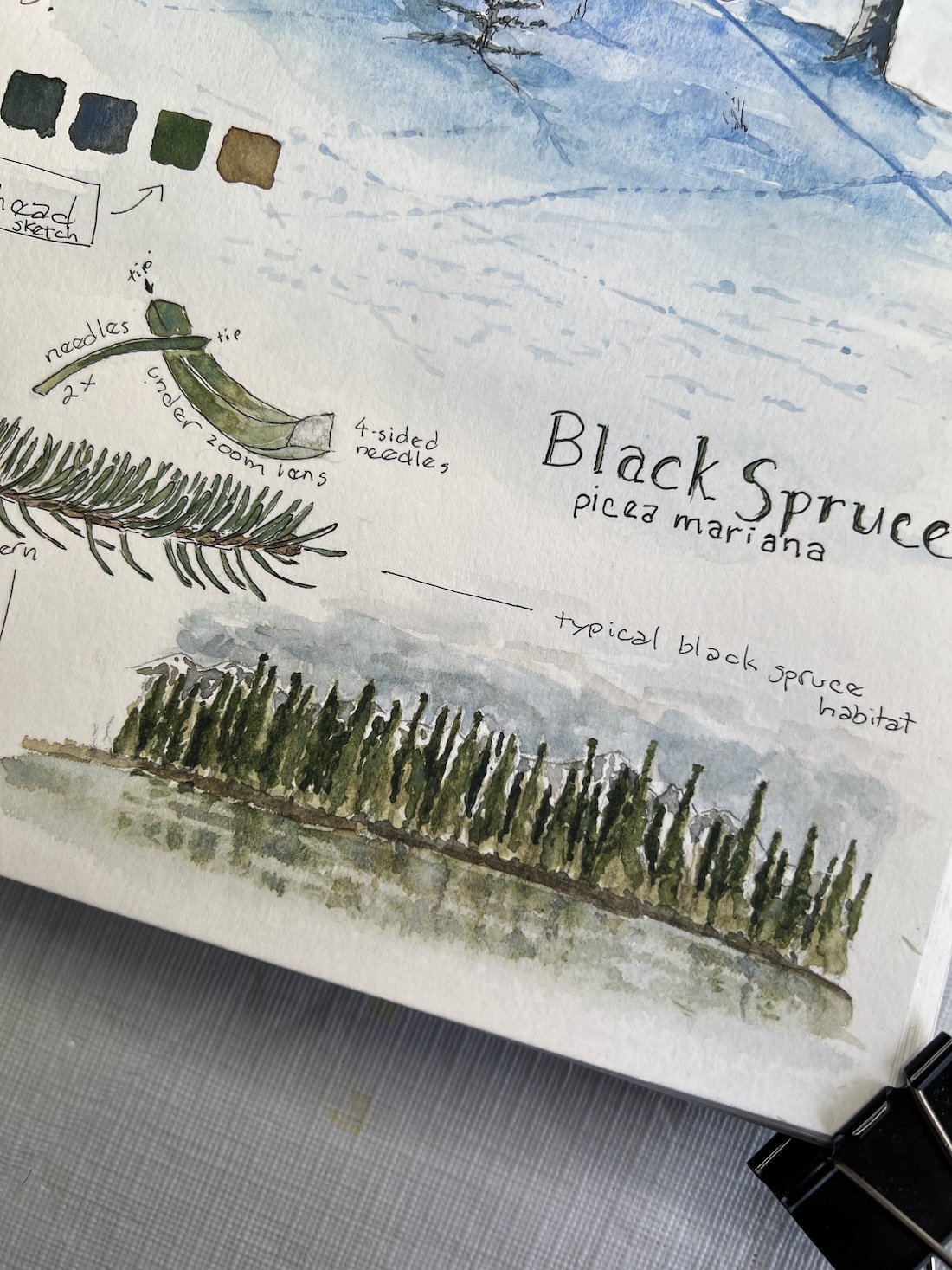Salvaging A Failed Intention
Reposted from my February 2024 newsletter, edited for this platform.
Earlier in the month I went in search of the Black-billed Magpie to include in my journal work. This member of the corvid family is everywhere in Anchorage, perfectly adapted to urban life.
After dropping my husband at a trailhead for his weekly skiing adventure, I merrily went off to find a good sketching spot.
The Magpies must have known my intention. Looking for Magpies, I kept striking out. Magpies were everywhere I wasn't. None. Zero. Zilch.
I gave up looking and went back to the trailhead to wait for my husband's return. Having covered a good deal of city territory, most of the available sketching time was spent searching, not sketching. Ugh.
Fortunately, my husband and his ski-buddy were behind schedule. I had time to find something, anything, to sketch.
I sat for a few minutes, looking around, and settled into a habitat watercolor sketch.
The light threw shadows across the snow, coloring the surface in beautiful shades of cold blues.
Working in my sketchbook, I questioned if the evergreens in the landscape were Black Spruce (Picea mariana).
My husband returned. My question would be unanswered, for now.
Since first landing in Alaska, the Black Spruce has taken up space in my brain, always wondering about it. What intrigues me most is how dense and dark a forest of Black Spruces can grow. Gazing into a stand of Black Spruce, my imagination creates a sense of mystery.
Another feature I adore about this tree is their ball of needles at the tree top, a kind of derby hat. Real scientists call this a "club" or "crow's nest". It's caused by squirrels.
The female fruit of an evergreen (what becomes the seed cone) develops at the top of trees. Squirrels climb up, nip off branches containing the cones, letting them fall to the forest floor, leaving a "naked" region just below the apex of the tree.
When the nipping is done, the squirrel scurries down to the ground and feeds on the highly nutritious seeds. While walking the forest you might see their "kitchen middens" – a pile of small branches and peeled away cone bracts.
So much of Alaska is prime Black Spruce habitat: bogs and wetlands. It's in a wet habitat that the Black Spruce can grow into thick, dense, dark forests, which is how the species got its common name.
Black Spruce can also be found in drier landscapes, from 6000' to the lower slopes of mountains, which is where that trailhead is located.
I went back last weekend to gather a twig sample, which included a snowshoe fail in thigh-deep snow. But I got what I came for! A branch sample! Yay! Something more to add to the journal page, something new to learn about!
Back in the studio, I pulled out the hand-lens, the tweezers, and even used the magnifier app on my phone. Playing like this is so much fun! I mean work. ;)
I didn't want to make scientifically accurate renderings. Instead, I relied on my ability to bring to the drawings aspects that point to key features of a subject in a looser style appropriate for journal work; features such as growth pattern, color, shape, and anything I learn that makes this subject what it is.
I learn from this process. Maybe so can those who look at my journal pages. People like you!
There are many interesting facts connected to P. mariana, too much to describe here. If you're inspired, tap here, here, and here for more information.
In the end, although my attempt to sketch Black-billed Magpies in the field headed south, I didn't.
There's ALWAYS something astonishing in nature to pay attention to.



